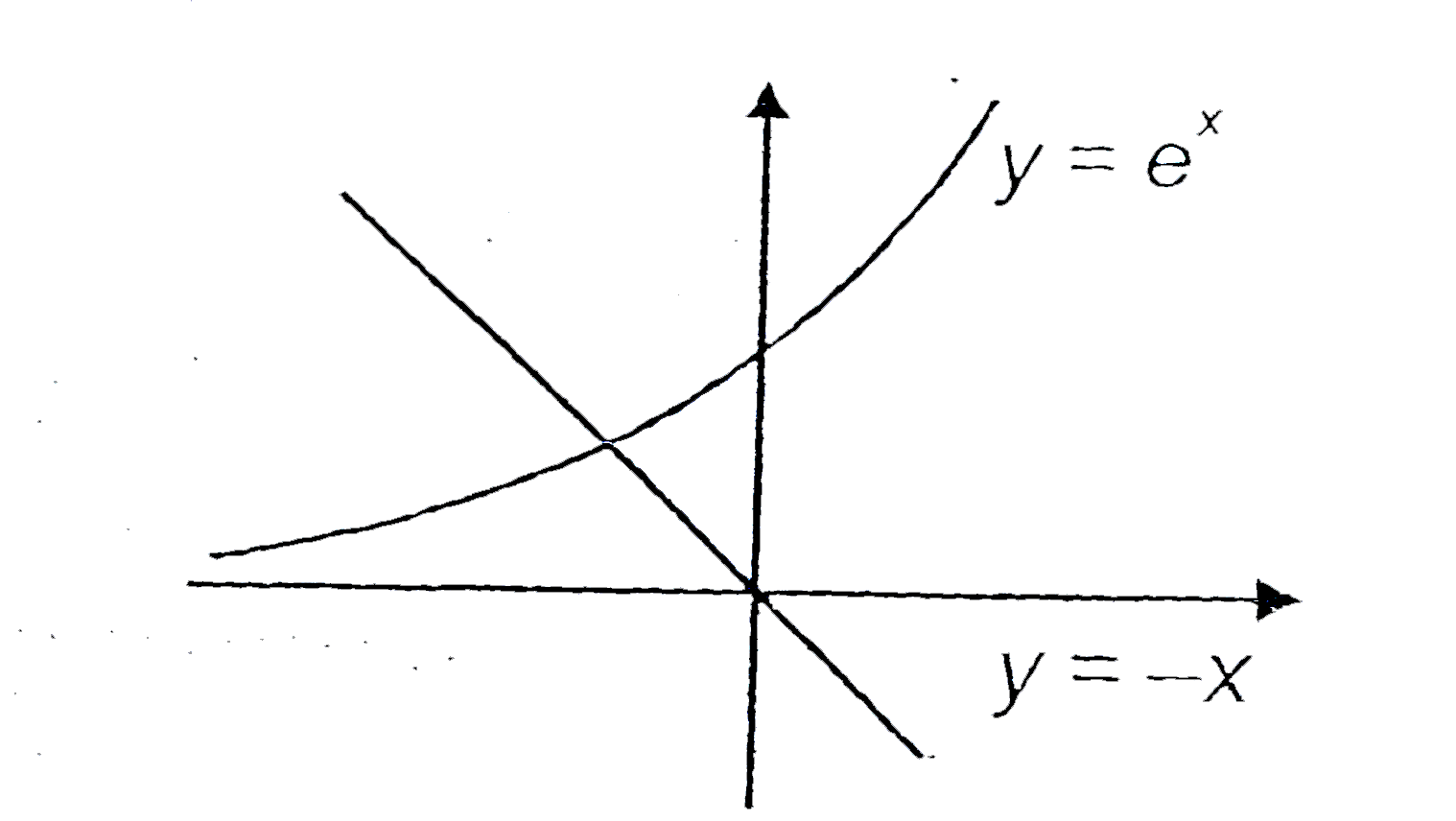If set A and B are defined as
A={(x,y)∣y=1x,0≠x∈R},B={(x,y)∣y=−x,x∈R,}. Then (a) A
∩
B
=
A
(b)A
∩
B
=
B
(c)A
∩
B
=
ϕ
(d)A
∪
B
=
A
A∩B=A
A∩B=B
A∩B=ϕ
A∪B=A
The correct Answer is:C
To solve the problem, we need to analyze the two sets A and B defined as follows:
- Set A: A={(x,y)|y=1x,x≠0,x∈R}
- Set B: B={(x,y)|y=−x,x∈R}
Step 1: Understand Set A
Set A consists of all points (x,y) where y is defined as 1x for all real numbers x except for 0. This means:
- For x=1, y=1 → Point (1, 1)
- For x=2, y=12 → Point (2, 0.5)
- For x=−1, y=−1 → Point (-1, -1)
- For x=−2, y=−12 → Point (-2, -0.5)
- The set A will have points that approach infinity as x approaches 0 from either side.
Step 2: Understand Set B
Set B consists of all points (x,y) where y is defined as −x. This means:
- For x=1, y=−1 → Point (1, -1)
- For x=2, y=−2 → Point (2, -2)
- For x=−1, y=1 → Point (-1, 1)
- For x=−2, y=2 → Point (-2, 2)
- This set represents a straight line with a negative slope.
Step 3: Find the Intersection A∩B
To find the intersection A∩B, we need to find points that satisfy both conditions:
1. From Set A: y=1x
2. From Set B: y=−x
Setting these equal to each other:
1x=−x
Multiplying both sides by x (noting x≠0):
1=−x2
This leads to:
x2=−1
Since there are no real solutions to this equation (as x2 cannot be negative), we conclude that there are no common points between sets A and B.
Thus, the intersection A∩B=∅ (the empty set).
Step 4: Conclusion
Given the options:
(a) A∩B=A
(b) A∩B=B
(c) A∩B=∅
(d) A∪B=A
The correct answer is (c) A∩B=∅.
- Set B: B={(x,y)|y=−x,x∈R}
Set A consists of all points (x,y) where y is defined as 1x for all real numbers x except for 0. This means:
- For x=1, y=1 → Point (1, 1)
- For x=2, y=12 → Point (2, 0.5)
- For x=−1, y=−1 → Point (-1, -1)
- For x=−2, y=−12 → Point (-2, -0.5)
- The set A will have points that approach infinity as x approaches 0 from either side.
Set B consists of all points (x,y) where y is defined as −x. This means:
- For x=1, y=−1 → Point (1, -1)
- For x=2, y=−2 → Point (2, -2)
- For x=−1, y=1 → Point (-1, 1)
- For x=−2, y=2 → Point (-2, 2)
- This set represents a straight line with a negative slope.
To find the intersection A∩B, we need to find points that satisfy both conditions:
1. From Set A: y=1x
2. From Set B: y=−x
1x=−x
Multiplying both sides by x (noting x≠0):
1=−x2
This leads to:
x2=−1
Since there are no real solutions to this equation (as x2 cannot be negative), we conclude that there are no common points between sets A and B.
Given the options:
(a) A∩B=A
(b) A∩B=B
(c) A∩B=∅
(d) A∪B=A
Topper's Solved these Questions
- BOOK - NCERT EXEMPLAR ENGLISHCHAPTER - SETSEXERCISE - FILLERS9videos
SETS
- BOOK - NCERT EXEMPLAR ENGLISHCHAPTER - SETSEXERCISE - TRUE AND FALSE6videos
SETS
- BOOK - NCERT EXEMPLAR ENGLISHCHAPTER - SETSEXERCISE - LONG ANSWERS TYPE QUESTIONS6videos
SETS
- BOOK - NCERT EXEMPLAR ENGLISHCHAPTER - SEQUENCE AND SERIESEXERCISE - Match the comumms2videos
SEQUENCE AND SERIES
- BOOK - NCERT EXEMPLAR ENGLISHCHAPTER - STATISTICSEXERCISE - FILLERS7videos
STATISTICS
Similar Questions
Knowledge Check
- Question 1 - Select One
If A={(x,y):y=1x,0≠x∈R},B={(x,y):y=−x,x∈R} then (i) A∩B=A (ii) A∩B=B (iii) A∩B=ϕ (iv) A∪B=A
AA∩B=ABA∩B=BCA∩B=ϕDA∪B=A - Question 2 - Select One
If x=a+bandy=a+2b then what is a - b , in terms of x and y ?
A2y−3xB3y−2xC2x−3yD3x−2y
If A={(x, y):y=ex, x∈R}and B={(x,y):y=e−x, x∈R} , then write A∩B.
View SolutionA point chanrge of magnitude q=4.5nC is moving with speed v=3.6×107ms−1 parallel to the x-axis along the line y=3m. Find the magnetic field at the origin produced by this charge when the charge is at the point x=−4m, y=3m, as shown in Fig.
 View Solution
View SolutionIn some question of sets, we have to make the use of graphs
For example
A={(x,y):y=ex,x∈R}
B={{x,y}:y=−x.x∈R}
Find n(A∩B)

It is clear that y=exandy=−x intersect at one pont. Hence n(A∩B)=1
A={(x,y):x2+y2≤2,x,y∈R}
B={{x,y):y≥x2,x,y∈R}View SolutionIn some question of sets, we have to make the use of graphs
For example
A={(x,y):y=ex,x∈R}
B={{x,y}:y=−x.x∈R}
Find n(A∩B)

It is clear that y=exandy=−x intersect at one pont. Hence n(A∩B)=1
A:{(x,y):y=√4−x2,x∈[−2,2]}
B={(x,y):y=|x|,x∈R}
Then n(A∩B)View SolutionIf A×B={(a,x),(a,y),(b,x),(b,y)}. Find A and B.
View SolutionIf A×B={(a,x),(a,y),(b,x),b,y)}, then A is equal to
View Solution

